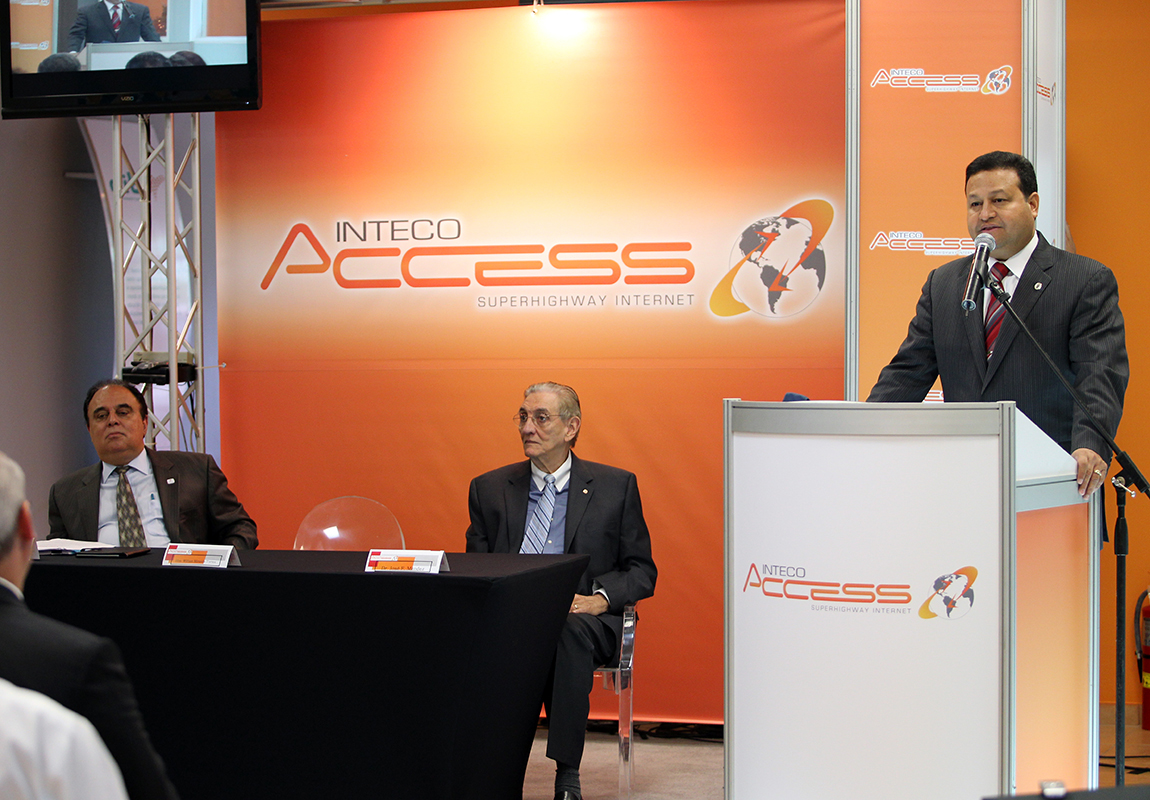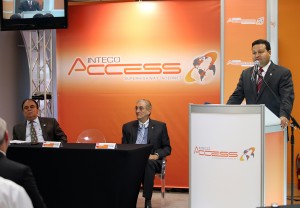Inteco launches regional broadband network


Caguas Mayor and Inteco Chairman William Miranda-Torres (at podium) offers details of the ambitious new network, as Ana G. Mendez Foundation President José Méndez (center) and Inteco Executive Director Oscar Jiménez (left) listen. (Credit: Francisco Manuel Matos/Caguas Press office)
The Central Eastern Technological Initiative, or Inteco, launched its ambitious $16.3 million broadband network project that will benefit a 10-town region through advanced Internet access Tuesday, a little more than a year after announcing its plans.
Aside from Caguas, the towns that will benefit from technological innovations programs to spawn from the network are Aguas Buenas, Cayey, Cidra, Gurabo, Humacao, Juncos, Las Piedras, Naguabo and San Lorenzo, Inteco executives along with Caguas Mayor and Inteco Chairman William Miranda-Torres said during a news conference.
“We’re excited to launch our project most biggest regional infrastructure project in the past 10 years, in benefit of the economic development of the ten towns Inteco comprises,” Miranda-Torres said. “It is the result of three years of hard work to build a broadband Internet network.”
In 2010, Inteco competed against 1,800 proposals submitted to the U.S. government for funding. The non-governmental organization was among the first 50 broadband projects to be implemented in the U.S. and its jurisdictions.
“Greater accessibility to broadband services at low cost, promotes economic development to move in the right direction and to significantly increase the number of new business, and therefore creating much needed jobs,” he said.
Meanwhile, Inteco Executive Director Oscar Jiménez said the network will serve as a springboard for commercializing new technologies and innovative products.
“We’re already serving 15 community anchor tenants or community service areas in libraries, town squares, schools, community centers and nonprofit institutions, as defined by the federal government,” he said. “Before the end of the month, we’ll add another 35 for a total of 50.”
The Inteco broadband project will expand access to high-speed Internet through a 515-mile network that will connect more than 250 institutions in the region. The project will eventually provide access to high-speed Internet access at affordable rates to region residents, including 600 businesses and industrial centers, 136,000 homes and 450,000 residents.
There are also about 80,000 grade and high school students in the region’s schools that will be able to connect to the network, Jiménez added.
To be part of the knowledge economy, Puerto Rico must provide a high speed quality and low cost broadband network to institutions such as schools, universities, municipalities, hospitals and citizens, the nonprofit in charge of deploying the network has said.










